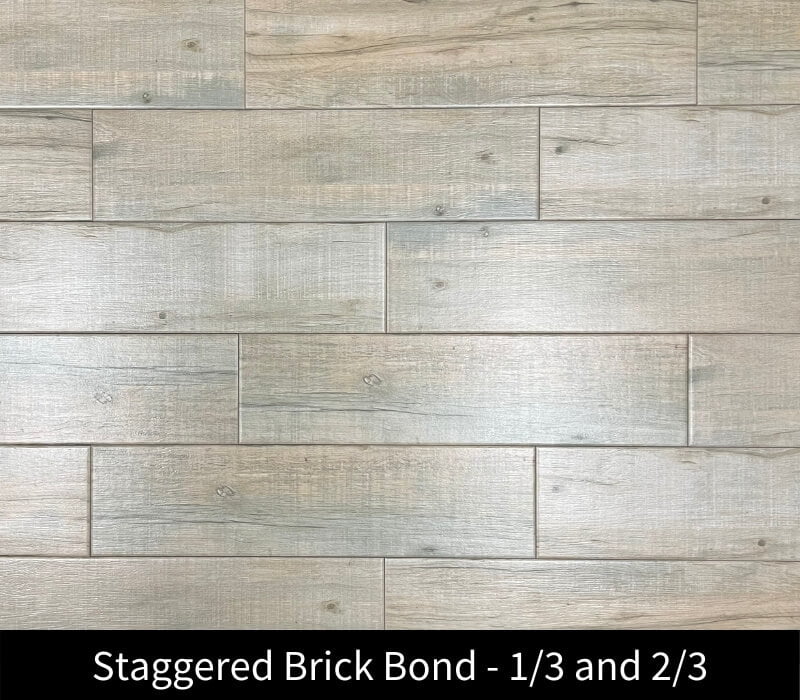
What You Need To Know About Large Format, Rectified & Non-Rectified Tiles
Large Format Tiles
A large format tile is any tile measuring – in length, width or both – 450mm or greater.
Larger ceramic or porcelain tiles are produced in thicker slabs – to avoid warping in the intense heat of the kiln – in effect to weigh the tile down. Variations in tile flatness will still occur and Australian and International Standards make allowances for slight curvature as it is inherent to the manufacturing process.
Professional installers should always consider any displacement in the surface of a large format tile with adjustment in laying pattern, grout joints, substrate re-levelling and correct adhesive application.
Difficulties can arise when the edge or corner of one tile sits slightly higher than the edge of the corner of the next tile, this is commonly known as lipping. This is especially noticeable for rectified tiles as they are typically installed with a finer grout joint.
Rectified Tiles
A rectified tile is a tile that has been cut or trimmed to size after being kiln fired. This results in the tiles having very flat square edges and for the same production lot the tiles are almost identical in size.
When installed with a small grout join a rectified tile creates a seamless look and over larger areas the joins tend to ‘disappear’. The shape of each individual tile blends into one uninterrupted surface as light glides from one tile to the next.

Large Format Tiles Are Often Rectified
Expertise is required to successfully create the flawless coverings of modernist structures. Large format rectified tiles employ additional skills to that used for laying smaller format non rectified tiles.
Your qualified tradesperson must consider:
- The pattern of the install – particularly for patterns such as brick bond where the corner of one tile meets the middle of the next tile, the middle of the tile is where bowing can occur. Stacked patterns or a staggered brick bond will not draw attention to slight bows in the tile.



- The size of the tile versus the size of the grout join. A small joint delivers the aesthetic, however tiles still need to expand to accommodate moisture and temperature changes. To allow for this, a 2mm grout joint is often recommended for larger formats of 600mm.
- Most floors and walls are not perfectly flat and some form or re-levelling is required before or during installation otherwise lipping will occur (when one tile sits higher than the one adjacent).
- For very uneven floors the use of a levelling compound or a sand & cement screed is required.
- For floors with moderate undulations, a packing up method may suffice (where extra glue is added in lower points of the substrate).
- Follow the arrows on the back of the tile – so lay in the direction the manufacturer has shown. The tiles will ‘fit’ better.
- The use of a high-quality non-slump adhesive will minimize lipping caused by adhesive slump during installation.
- Australian Standard also requires “back buttering” adhesive for large format tiles to improve contact coverage.
Non Rectified Tile
Non Rectified tiles are where the clay mixtures are pressed into the desired shape and size, then fired, with no cutting or trimming done after they exit the kiln. This type of tile is also known as a cushion edge, pressed edge, or soft edge tile to describe the roundness or graduated shape of the edge.
Another distinct feature of non-rectified tiles is the variations in size within the production. During the firing process, shrinkage occurs due to inconsistency in moisture content, discrepancies in the raw material and minor heat displacements in the kiln. This can result in a size disparity within the production lot (batch) of up to 2mm.

After being cooled, the production is sorted or calibrated (measured) by way of laser module and the tiles are packed into their ‘calibres’. There are still slight size variations within the calibre of non-rectified tiles and they are allowed for by installing a larger (3-5mm) grout join. The larger grout join and the graduated edge of the non-rectified tile will yield more to an uneven substrate – particularly if the non-rectified tiles are a smaller format. This reduces labour costs with less need for re – levelling before or during installation.
